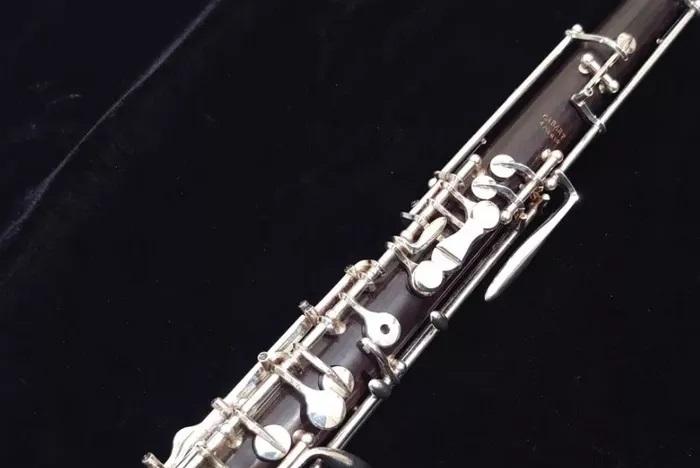What is Another Name for the English Horn? You Should Know

The English horn is one of the most expressive and mysterious woodwind instruments in classical and contemporary music. Despite its name, it is not a horn, and it isn’t strictly English. The name alone causes confusion among beginners, composers, and even some performers. So what is another name for the English horn? The answer is “Cor Anglais.” In this article, we’ll explore the origin, historical evolution, naming conventions, and usage of the English horn—also known as the Cor Anglais—across different cultures and musical settings. We’ll examine why this misnomer persists, how it differs from similar instruments, and what it contributes uniquely to the orchestral palette.
The Etymology of “Cor Anglais”
The term “Cor Anglais” is French and translates directly to “English horn.” However, its origin is steeped in linguistic and historical confusion. The word “cor” refers to a horn, and “anglais” to English. But historically, this instrument was neither British in origin nor a brass instrument. Some scholars believe the term “anglais” might have been a corruption of “anglé,” meaning “angled” in French, referring to the slightly bent shape of earlier versions of the instrument. Over time, this mistranslation stuck, and “English horn” became the standard term in English-speaking countries.
Historical Evolution of the English Horn
The English horn or Cor Anglais has its roots in the oboe da caccia of the Baroque period. The oboe da caccia had a curved body and was used by composers like J.S. Bach for its mellow tone. Over the 18th and 19th centuries, instrument makers refined its construction, eventually leading to the development of the English horn as we know it today. It retained the angled bocal and pear-shaped bell from its predecessors, contributing to its rich and dark tone.
Why Is It Called the English Horn?
Despite its name, the English horn was not developed in England. Most of its development occurred in continental Europe, particularly France, Germany, and Austria. The term “English horn” likely arose due to the misunderstanding of the word “anglé” as “anglais.” Once the name entered common usage, it was adopted across English-speaking countries without much question, even though it misrepresents the instrument’s true origin and nature.
The Role of the English Horn in the Orchestra
The English horn is a transposing instrument pitched in F, a fifth below the oboe. It plays a critical role in the orchestra by offering a mellow, haunting tone that blends beautifully with strings and woodwinds. Its most celebrated moments in orchestral repertoire include the famous solo in Dvořák’s “New World Symphony,” Act III of Wagner’s “Tristan und Isolde,” and Ravel’s “Boléro.” Composers often assign it lyrical, emotional passages that require depth and warmth.
The English Horn in Chamber and Solo Music
Although less common than the oboe in solo settings, the English horn has a growing repertoire in chamber and solo music. Composers like Jean Sibelius, Benjamin Britten, and Paul Hindemith have written important works that highlight its expressive range. Modern composers are also incorporating the English horn into contemporary classical, film scores, and experimental genres. Its unique timbre lends itself well to slow, melancholic passages and pastoral imagery, making it invaluable in thematic storytelling through music.
Alternate Names in Other Languages
Different languages and cultures refer to the English horn using various terms, some of which reflect the instrument’s shape, tone, or historical usage:
German: Englischhorn
Italian: Corno Inglese
Spanish: Corno Inglés
Russian: Английский рожок (Angliyskiy rozhok)
Each term is essentially a translation of “English horn” or “Cor Anglais,” despite the instrument’s lack of true English heritage. The consistency of the “English” adjective in naming adds to the global confusion around the instrument’s identity.
Famous English Horn Passages in Music
Many orchestral works showcase the English horn with unforgettable solos that have become iconic. Some examples include:
Dvořák’s Symphony No. 9 “From the New World”: Largo movement solo
Wagner’s “Tristan und Isolde”: Act III lament
Ravel’s “Boléro”: Characteristic repetitive solo lines
Rossini’s “William Tell” Overture: Pastoral section
These solos highlight the instrument’s capacity for lyrical expression and its role as a musical narrator in orchestral storytelling.
The English Horn in Modern Music and Film
Outside classical settings, the English horn has found a home in modern music, especially in cinematic scoring. Composers like John Williams, Howard Shore, and Ennio Morricone use the English horn to evoke emotion, nostalgia, or solitude. In film, its distinctive voice stands out without overpowering the ensemble. Its presence can be heard in soundtracks for movies like “The Lord of the Rings,” “Star Wars,” and many historical dramas.
Conclusion
The question “what is another name for the English horn?” may seem simple, but it opens the door to a complex history of music, language, and cultural evolution. The term “Cor Anglais” offers insight into a fascinating past, while the instrument’s sound continues to shape the future of orchestral and solo performance. Whether you call it the English horn or the Cor Anglais, its rich voice remains one of the most soulful and resonant in the woodwind family.
- Art
- Causes
- Crafts
- Dance
- Drinks
- Film
- Fitness
- Food
- Games
- Gardening
- Health
- Home
- Literature
- Music
- Networking
- Other
- Party
- Religion
- Shopping
- Sports
- Theater
- Wellness



